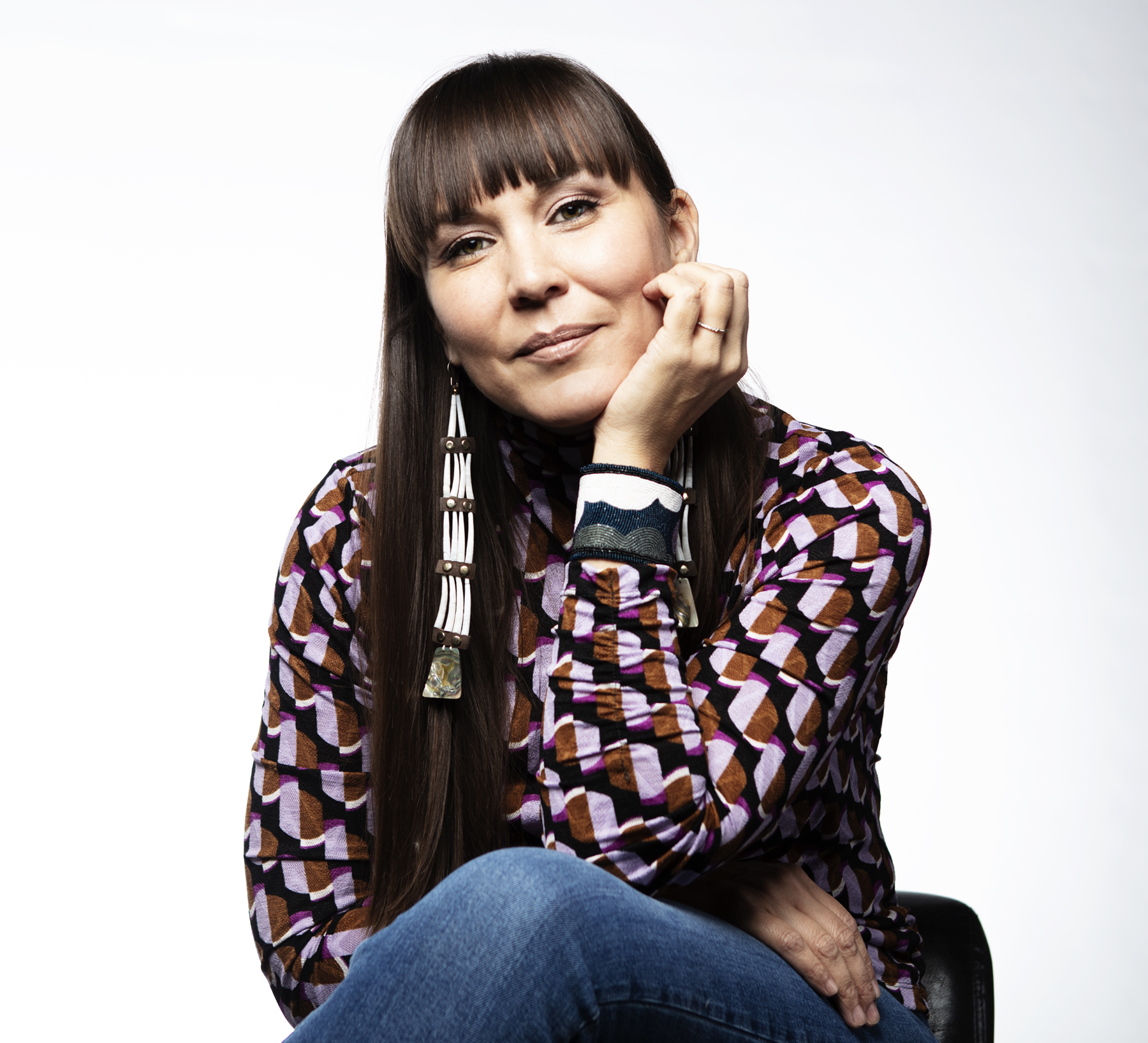Native American Heritage Week: Cara Romero
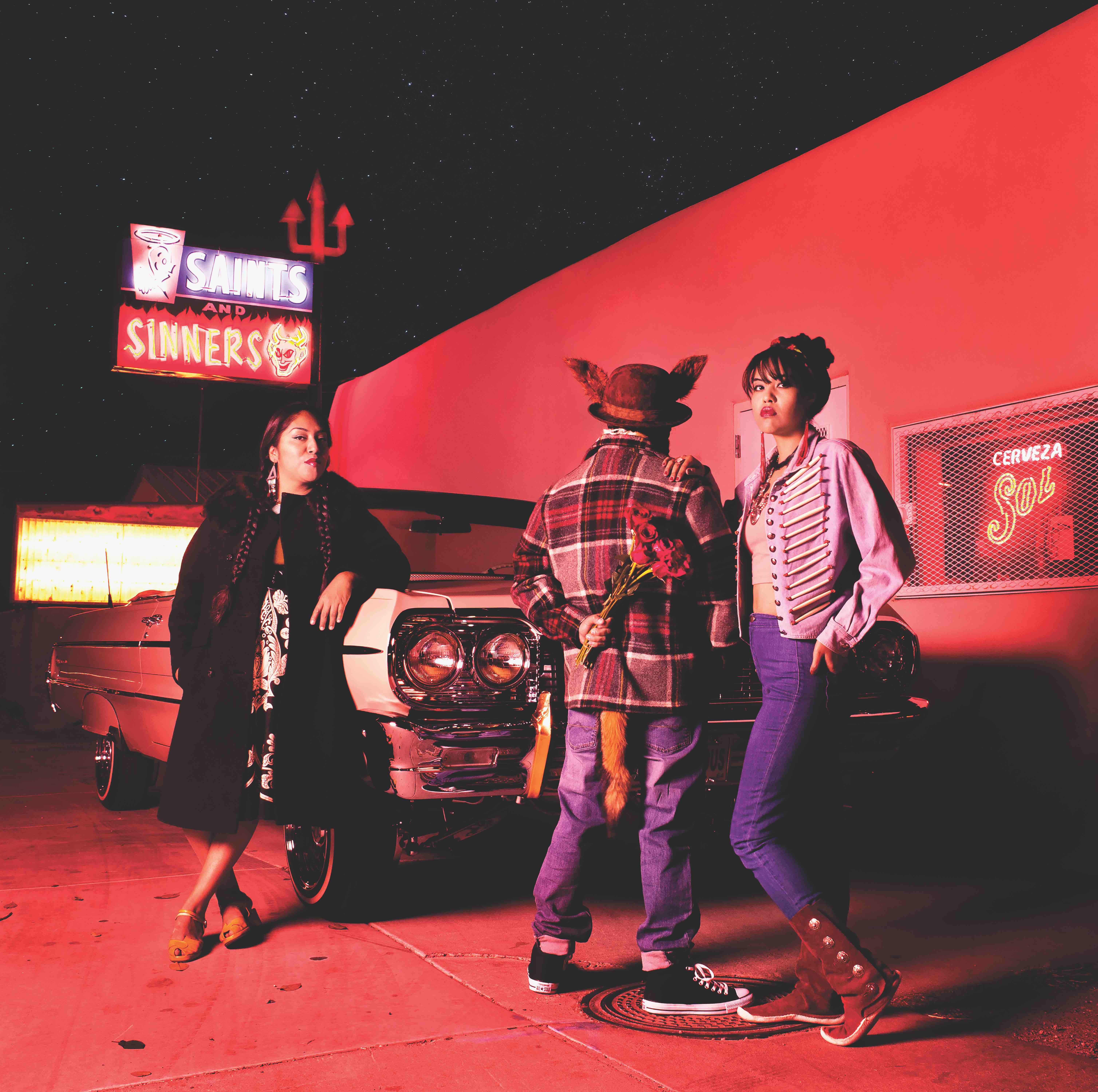
© Cara Romero. Courtesy of the artist. All rights reserved. From the Series Americana which explores the telling of Native American oral histories known in Native communities but erased from American history in academia and media. The series explores the retelling of history from a Native point of view by utilizing different genres of film that have created an absence of Native representation or casting Natives as villainous or unintelligent and then countering those depictions. The series examines the startling effect of film noir and other stylized techniques to garner an understanding of the audience for the way these depictions are internalized when the “tables are turned,” and the Native subjects become the protagonists and the antagonists in the visual narratives become the colonizers. While some are potentially dark or disturbing (they are meant to be), some are celebratory of lived experiences that were erased throughout American history. The artist reflects on how easily Native Americans were portrayed as inferior throughout Americana and the effects those portrayals still have on Native people and lets the audience feel those inequities. Collections: Autry Museum, Crocker Museum, Davis Museum, MoCNA, Minnesota Museum of American Art, Montclair Art Museum, Nelson-Atkins Museum, Nerman Museum, New Mexico Museum, Newark Museum, UN Reno and Williams College Museum, Tweed Museum, Saint Louis Art Museum, Princeton University
Today we are excited to feature the amazing work of Cara Romero, a contemporary lens-based artist and member of the Chemehuevi Indian Tribe of the Chemehuevi Reservation (a branch of the Southern Paiute) of the Mojave Desert, CA. She is a passionate spokesperson for Indigenous cultural and environmental issues. Her complex and nuanced images combine traditional iconography with a contemporary perspective, bringing past, present and future into consideration. The artist orchestrates a balancing act in her work by rewriting stories of Indigenous identity, battling cultural misappropriation, and confronting stereotypes, particularly around Native women, all the while preserving tradition and maintaining cultural sensitivity.
The artist’s work is a blend of fine art and editorial, shaped by a visceral approach to representing Indigenous and non-Indigenous cultural memory, collective history, and lived experiences from a Native American female perspective.
Her work is currently on view at In Our Hands: Native Photography, 1890 –Now, at the Minneapolis Institute of Art.
In a fine art photographic practice that blends documentary and commercial aesthetics, Cara Romero (Chemehuevi Indian Tribe) creates stories that draw from intertribal knowledge to expose the fissures and fusions of Indigenous and non-Indigenous cultural memory, collective history, and futurity.
Romero has held solo exhibitions in the US, UK, and Germany. Her recent group exhibitions include Our Selves: Photographs by Women Photographers at the Museum of Modern Art and Water Memories at the Metropolitan Museum of Art (2022). Her public art projects include #TONGVALAND presented in Los Angeles by NDN Collective (2021); Restoration: Now or Never with Save Art Space in London (2020), and Desert X in the Coachella Valley (2019).
Widely collected, Romero’s photographs are in private and public collections including those at the Denver Art Museum, the Peabody Essex Museum, The Hood Museum, the Minneapolis Institute of Art, the MoMA, the Nelson-Atkins Museum of Art, Los Angeles County Museum of Art, and the MET.
Romero was raised between the rural Chemehuevi reservation in California’s Mojave Desert and the urban sprawl of Houston. She is based in Santa Fe.
As an Indigenous photographer, I embrace photography as my tool to resist Eurocentric narratives and as a means for opening audiences’ perspectives to the fascinating diversity of living Indigenous peoples. My approach fuses time-honored and culturally specific symbols with 21st-century ideas. This strategy reinforces the ways we exist as contemporary Native Americans, all the while affirming that Indigenous culture is continually evolving and imminently permanent.
Instagram: @cararomerophotography
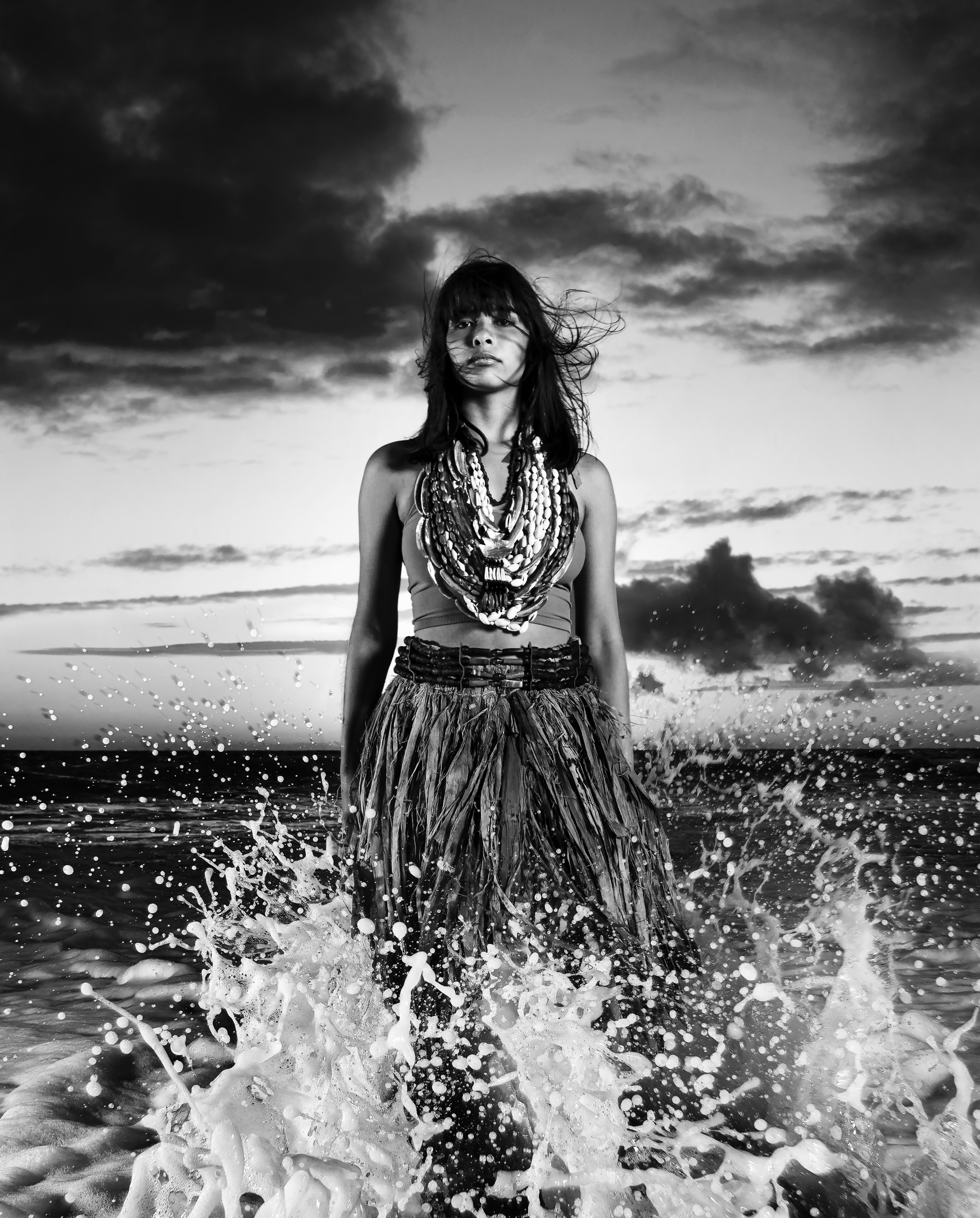
© Cara Romero, Hermosa, Courtesy of the artist. All rights reserved. Hermosa is a portrait of my daughter Crickett Tiger (Muscogee Creek/Cochiti) at Hermosa Beach, dressed in the regalia of the first peoples of California. The regalia is made and borrowed from California artist Leah Mata-Fragua. Captured at sunset and a surprise wave—the image evokes the oral history and creation story of Chemehuevi, known as Great Ocean Woman (Hutsipamamow), a spirit of the ocean that is seen and known throughout all of Southern California as the creator of all life. The arresting image halts the viewer and stands as a counter-narrative in the face of the ongoing erasure and genocide of California First peoples that our landscape and coasts are still revered as sacred places of creation. The photograph resulted from a series of images that appeared on billboards across Los Angeles in the summer and fall of 2021 while in quarantine with only family. The image pays homage to the original caretakers of this region—first known as Tovaangar. The three months we spent at the beach together in quarantine transformed us and became a communing and healing space of remembrance for me of Chemehuevi creation stories and songs we sing and tell of this place. The images that emerged became a visualization of the indigenous worldview that these places, however, developed, are still holy places to First Peoples. Collections: Detroit Institute of Art, Guggenheim Museum, Minneapolis Institute of Art, The Huntington, and University of California
Artist Statement
Sometimes I portray old stories, such as creation stories or animal stories, in a contemporary context to show that each grows and evolves with ensuing generations. I use vibrant color, experimental lighting, and photo-illustration to explore ideas of how the supernatural world overlaps with our everyday lives. In combining form and content, I reflect a uniquely Indigenous worldview that shows the resilience and beauty of our thriving cultures. Here, self-representation through photography battles the “one-story” narrative that casts complex, living cultures into stereotypes, instead offering multi-layered visual architectures that invite viewers to abandon preconceived notions about Native art, culture, and peoples.
To further counter photography’s exploitive past, I actively collaborate with my models. Hailing from many tribal backgrounds and many geographic regions, these subjects are my friends and relatives. Together we stage photographs to tell stories that we feel (together) are important and give back to our Native community. My photographs explore our collective Native histories, and the ways in which our Indigeneity expresses itself in modern times. I firmly believe Native peoples are as Indigenous today as we were prior to the advent of colonialism.
When we as Native people explore new artistic tools and techniques, such as photography, we indigenize those media. Our vision and intimate relationship to our communities are precisely what make Native photographers the people best equipped to convey the allure, strength, and complexity of contemporary Native life. I am deeply committed to making work that addresses Native American social issues and changes the way people perceive us in contemporary society. My style offers viewers sometimes serious and sometimes playful social commentary on pressing issues like the border wall, the hyper-sexualization of Native women in histories of photography, environmental destruction of Native lands, and stereotypes of Indigeneity in pop culture. In response, I unapologetically depict where we are now, in the present day, making sure to always respect cultural protocol and ancestral ties. – Cara Romero

© Cara Romero, Naomi, Courtesy of the artist. All rights reserved. Naomi is from the series The First American Girl that is an examination of past misrepresentation of indigenous women as dolls, and it’s meant to reclaim an identity. It was a conscious decision to make sure not everything looks historic, so that psychologically when people see them they immediately understand these are modern contemporary peoples, and living peoples. It’s not a photogravure from the 1850s. Collections: Autry Museum, Crocker Art Museum, Fralin Museum of Art, Institute of American Indian Arts, Milwaukee Art Museum, Museum of World Cultures (Rotterdam), Nelson-Atkins Museum, Palm Springs Art Museum, Peabody Essex Museum, Philbrook Museum of Art, Tweed Museum, and Wellin Museum of Art, Wereld Museum.
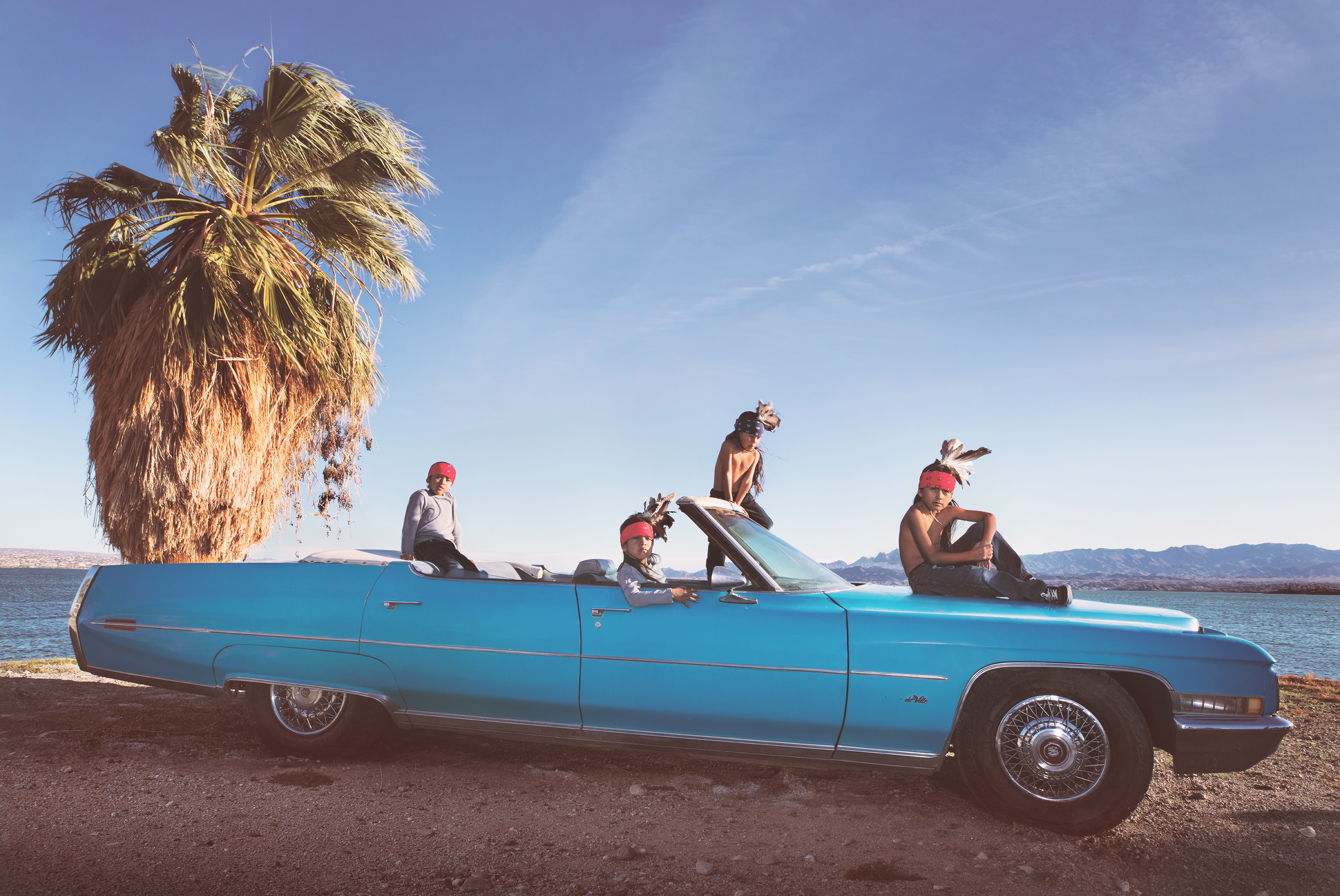
© Cara Romero, Shameless, Courtesy of the artist. All rights reserved. “This image features four Chemehuevi tribal youth just hanging out on the shoreline in my dad’s backyard. This is the view from the Chemehuevi Valley Indian Reservation where our Tribe stewards 41 miles of California waterfront of the sacred Colorado River. “Shameless” is the name of my father’s 1972 custom made Columbia blue Cadillac convertible. It is a rez car and has a lot of rez personality. The boys dressed themselves for this shoot, and I love that they chose to mix their modern street couture with their feather bundles.”
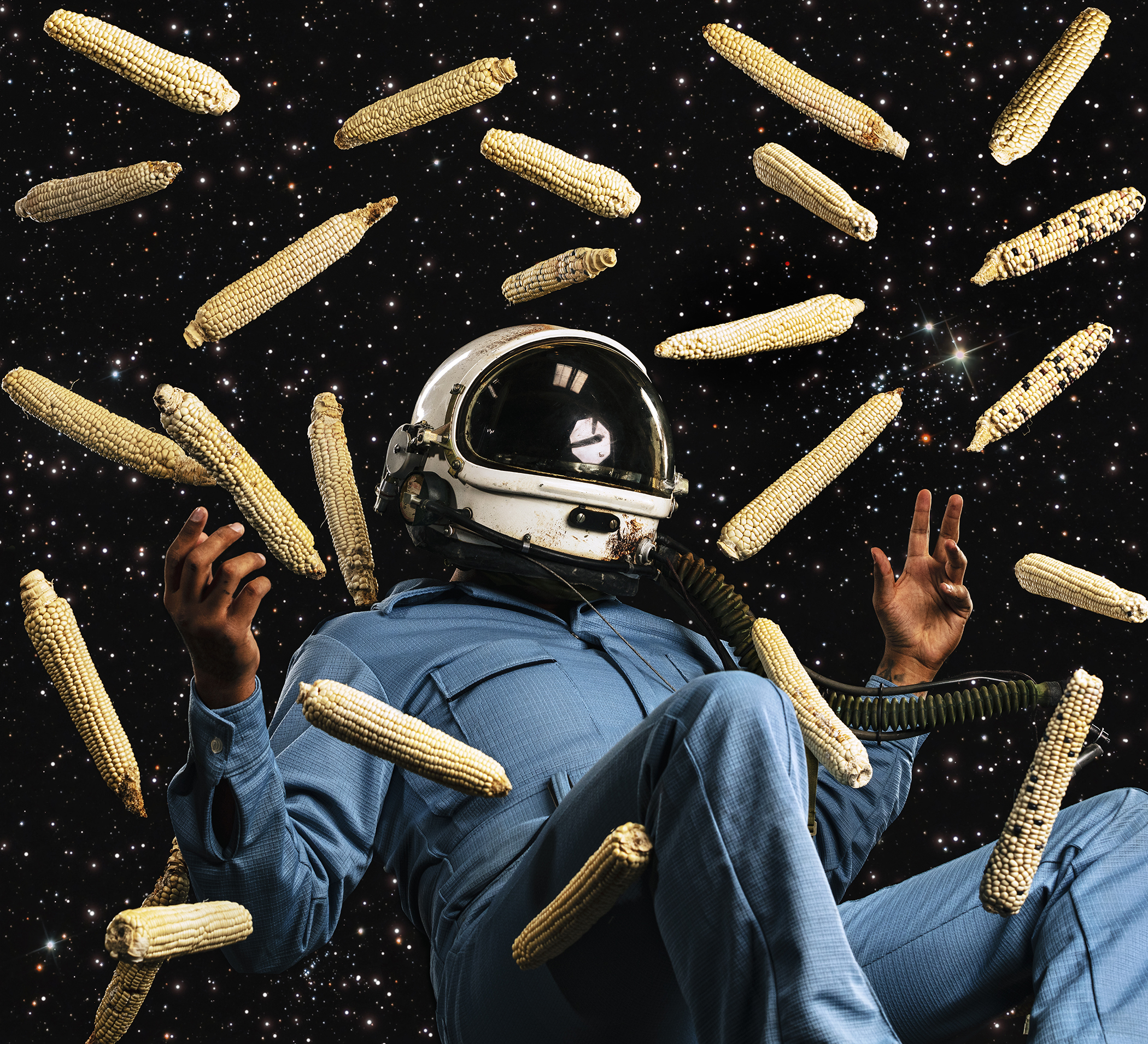
© Cara Romero. The Zenith, Courtesy of the artist. All rights reserved. The zenith is the imaginary point directly “above”…opposite of the gravity point below, it’s the highest point on the celestial sphere. This photograph features George Alexander (Mvskoke Creek) floating in a field of indigenous white corn strung up on a fishing line in “space”. A lighthearted composition addressing the futurity of our precious foodways—in an indigenous future, we take our past with us. We remember that while life and culture is always changing, some things are ever- permanent. Collections: Hood Museum of Art, Minneapolis Institute of Art, Montclair Art Museum, North Dakota Museum, Philbrook Museum and Weltmuseum Wien.
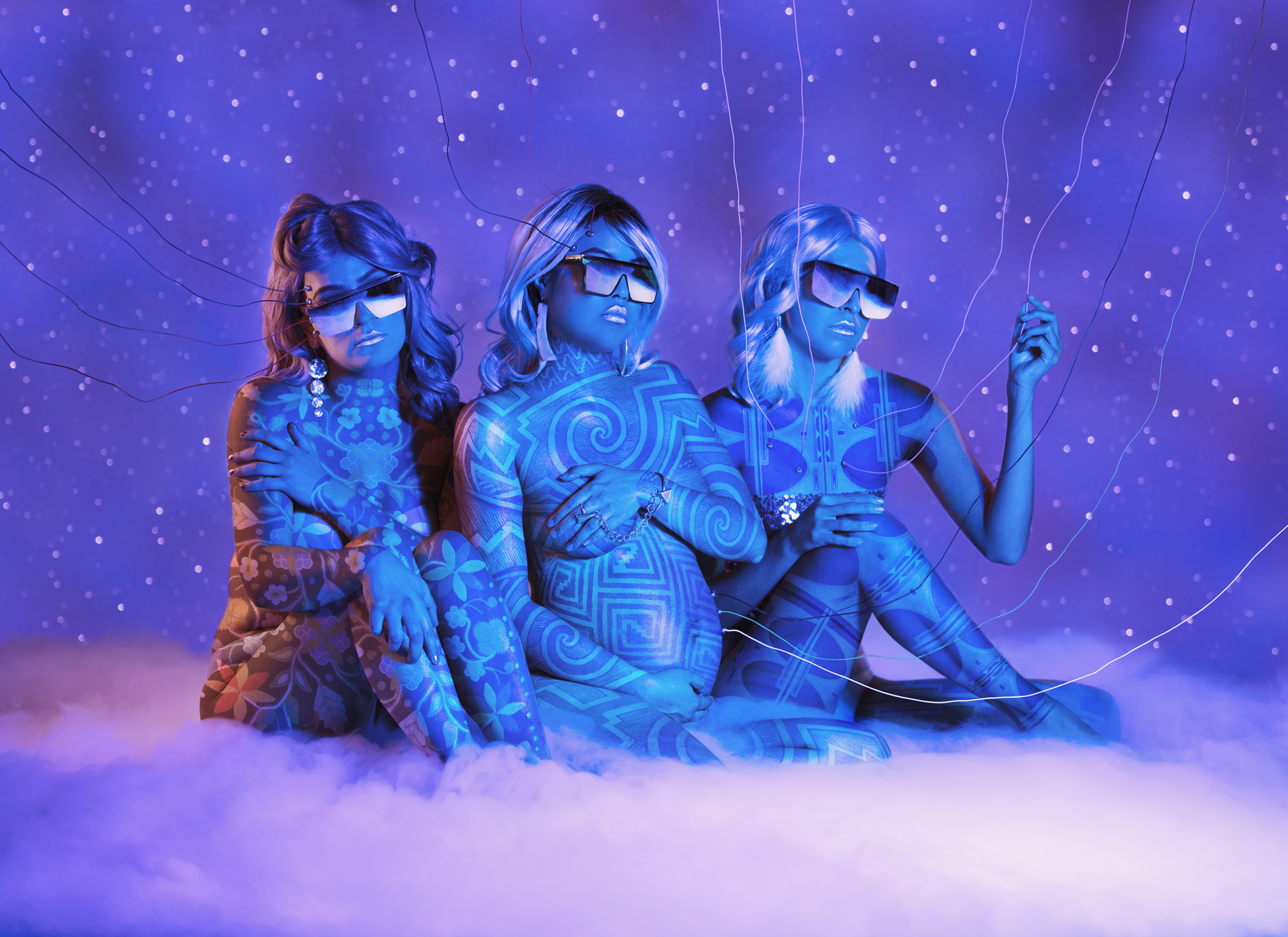
© Cara Romero. Three Sisters, Courtesy of the artist. All rights reserved. From a newer genre of Native Futurism: “3 SISTERS” refers to the indigenous science (sometimes called T.E.K. or Traditional Ecological Knowledge) of 3 Sisters gardens implemented by many tribes that demonstrates the sophisticated empirical science that has helped tribes live sustainably and in harmony with our environments for 1000s of years. “3 Sisters” imagines a future where Native women hold a sacred role in the healing and balance of our Earth. The wires are “plugged in” to their hearts, minds, and life-giving energies – the things our futures depend upon for survival. Further, we can imagine that despite the ever-changing landscapes of lifeways and culture, we will take our ancestral designs well into the future as they are ever-permanent. Each woman wears tribally specific vernacular from their Tribes, digitally remastered on their bodies. It is meant to be light and serious, hopeful and uplifting. Collections: Hood Museum, Idyllwild Arts Academy, North Dakota Museum, Palm Springs Art Museum, Philbrook Museum of Art, Spencer Museum, and Thomas Foundation.

© Cara Romero. Towük Kani (We Are Home), Courtesy of the artist. All rights reserved. Joshua trees (yucca brevifolia) are known as tsawarümp (tsah-wah-ROOMP) in our Chemehuevi language. They are living entities, ancient spirit beings in our shared ancestral homelands of the California desert. Deeply valued by our people for their ecological and spiritual significance, they are now endangered due to development, wildfire, drought, and climate change. Without increased protections by state and federal governments, our Joshua trees will likely disappear from our homelands by the end of the century. Working closely with my community, I am an activist in inter-tribal efforts to defend our sacred homelands. This image was taken at sunrise in Joshua Tree Nation- al Park during an introspective pilgrimage to a sacred area while seeing my father through the end of his life. The experience among these giants was medicine for my broken heart, and restored my life energy.
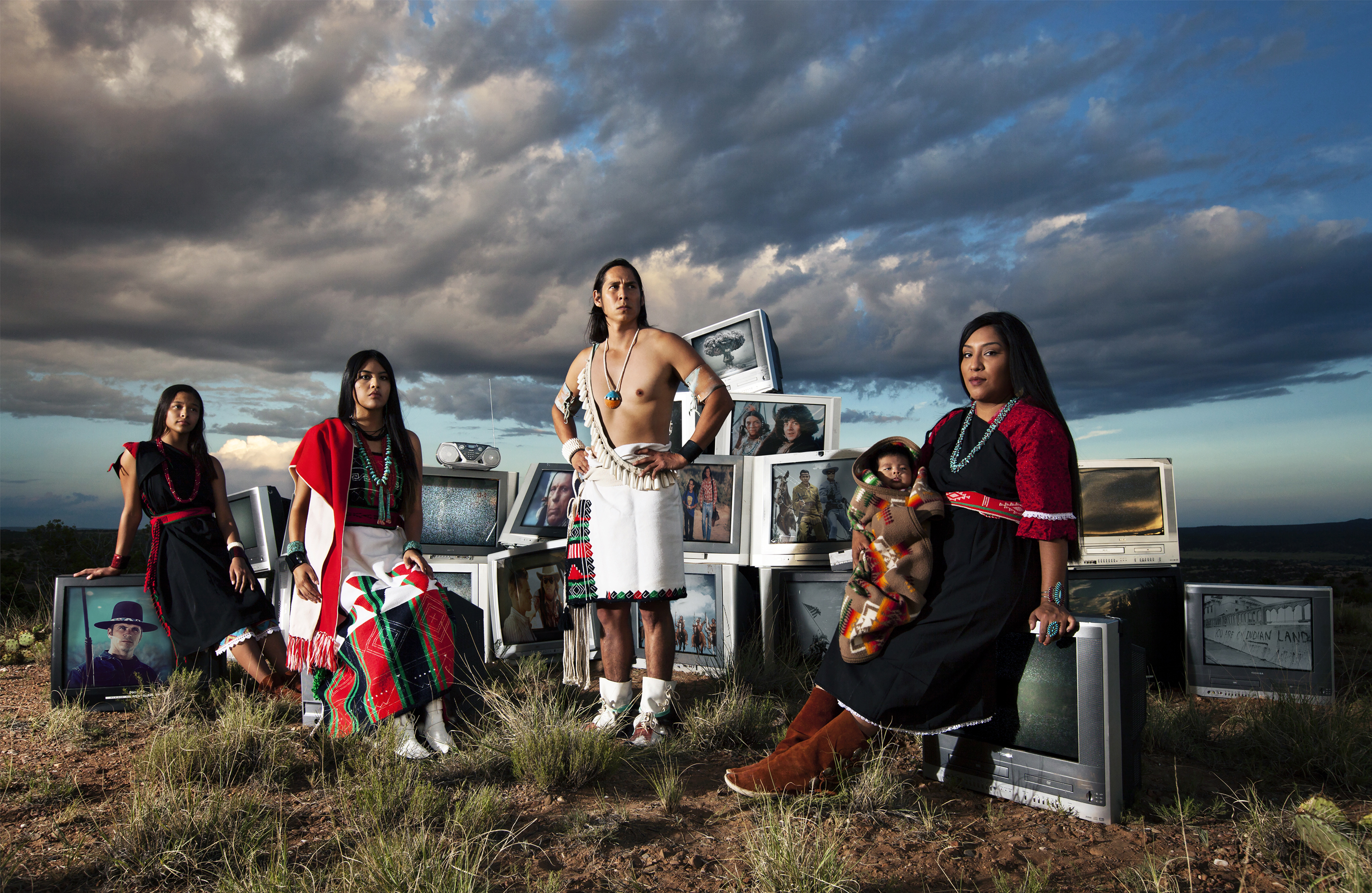
© Cara Romero. TV INDIANS (Color), Courtesy of the artist. All rights reserved. In this scene, Puebloan people sit atop a cliff overlooking the Galisteo Basin. The man in the center looks away from the camera and into the distance. Unlike him, the three women in the photo lean casually against the pile of dated television sets behind them. TV Indians was initially conceived of in thinking about the ruins in the New Mexico landscape of adobe bricks and the mission that have fallen into just remnants and fantastic geometric shapes. Simultaneously, thinking about our American consumerism and these ideas of our new ruins and the landscape. I gathered 40 TVs from a nearby recycling center to create the setting. Displayed on these screens are a series of images, some iconic and others not as familiar, illustrating how Native Americans are portrayed in media directly confronted with their source of inspiration and vice versa. Images include cultural references to events that have affected Native communities, like the test detonation of the atomic bomb in New Mexico in 1945 or the raising of the American flag at Iwo Jima, but also stereotypical selections, including Keep America Beautiful’s “Crying Indian” ad campaign and a shot from the 1990 film Dances with Wolves. The expressions of subjects appear defiant. The contrast between the Pueblo people and the images on the screens reveals how nonsensical the old stereotypes are. Collections: Newberry Library, Ruth Chandler Williamson Gallery
Posts on Lenscratch may not be reproduced without the permission of the Lenscratch staff and the photographer.
Recommended
-
Earth Week: Aaron Huey: Wallpaper for the End of the WorldApril 26th, 2024
-
Earth Week: Casey Lance Brown: KudzillaApril 25th, 2024
-
Tara Sellios: Ask Now the BeastsApril 6th, 2024
-
ALEXIS MARTINO: The Collapsing Panorama April 4th, 2024
-
Emilio Rojas: On Gloria Anzaldúa’s Borderlands: The New MestizaMarch 30th, 2024

